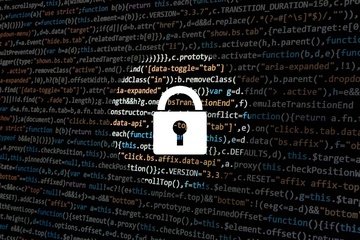
It’s been lower than three years since OpenAI launched ChatGPT, setting off the GenAI increase. However in that quick time, software program improvement has reworked: code-complete assistants developed into chat-based “vibe coding,” and now we’re getting into the agent period, the place builders could quickly be managing fleets of autonomous coders (if Steve Yegge’s predictions are right). Writing code has by no means been simpler, however securing it hasn’t saved tempo. Unhealthy actors have wasted no time concentrating on vulnerabilities in AI-generated code. For AI-native organizations, lagging safety isn’t only a legal responsibility—it’s an existential threat. So the query isn’t simply “Can we construct?” It’s “Can we construct safely?”
Safety conversations nonetheless are inclined to middle across the mannequin. The truth is, a brand new working paper from the AI Disclosures Undertaking finds that company AI labs focus most of their analysis on “pre-deployment, pre-market, issues comparable to alignment, benchmarking, and interpretability.”1 In the meantime, the actual risk floor emerges after deployment. That’s when GenAI apps are weak to immediate injection, knowledge poisoning, agent reminiscence manipulation, and context leakage—in the present day’s model of SQL injection. Sadly, many GenAI apps have minimal enter sanitization or system-level validation. That has to vary. As Steve Wilson, creator of The Developer’s Playbook for Giant Language Mannequin Safety, warns, “With out a deep dive into the murky waters of LLM safety dangers and learn how to navigate them, we’re not simply risking minor glitches; we’re courting main catastrophes.”
And in case you’re “totally giv[ing] in to the vibes” and operating AI-generated code you haven’t reviewed, you’re compounding the issue. When insecure defaults get baked in, they’re tough to detect—and even more durable to unwind at scale. You don’t have any concept what vulnerabilities could also be creeping in.
Safety could also be “everybody’s accountability,” however in AI methods, not everybody’s tasks are the identical. Mannequin suppliers ought to guarantee their methods resist prompt-based manipulation, sanitize coaching knowledge, and mitigate dangerous outputs. However most AI threat emerges as soon as these fashions are deployed in reside methods. Infrastructure groups should lock down knowledge authentication and interagent entry utilizing zero belief ideas. App builders maintain the frontline, making use of conventional secure-by-design ideas in totally new interplay fashions.
Microsoft’s latest work on AI pink teaming reveals how guardrail methods must be tailored (in some instances radically so) relying on use case: What works for a coding assistant would possibly fail in an autonomous gross sales agent, as an example. The shared stack doesn’t suggest shared accountability; it requires clearly delineated roles and proactive safety possession at each layer.
Proper now, we don’t know what we don’t learn about AI fashions—and as Bruce Schneier just lately identified (in response to new analysis on emergent misalignment): “The emergent properties of LLMs are so, so bizarre.” It seems, fashions tuned on insecure prompts develop different misaligned outputs. What else would possibly we be lacking? One factor is evident: Inexperienced coders are introducing vulnerabilities as they vibe, whether or not these safety dangers flip up within the code itself or in biased or in any other case dangerous outputs. They usually could not catch, and even concentrate on, the risks—new builders usually fail to check for adversarial inputs or agentic recursion. Vibe coding could make it easier to shortly spin up a undertaking, however as Steve Yegge warns, “You’ll be able to’t belief something. It’s a must to validate and confirm.” (Addy Osmani places it a bit of in another way: “Vibe Coding shouldn’t be an excuse for low-quality work.”) With out an intentional deal with safety, your destiny could also be “Prototype in the present day, exploit tomorrow.”
The following evolutionary step—agent-to-agent coordination—solely widens the risk floor. Anthropic’s Mannequin Context Protocol and Google’s Agent2Agent allow brokers to behave throughout a number of instruments and knowledge sources, however this interoperability can deepen vulnerabilities if assumed safe by default. Layering A2A into current stacks with out pink groups or zero belief ideas is like connecting microservices with out API gateways. These platforms should be designed with security-first networking, permissions, and observability baked in. The excellent news: Basic abilities nonetheless work. Layered defenses, pink teaming, least-privilege permissions, and safe mannequin interfaces are nonetheless your finest instruments. The guardrails aren’t new. They’re simply extra important than ever.
O’Reilly founder Tim O’Reilly is keen on quoting designer Edwin Schlossberg, who famous that “the ability of writing is to create a context by which different folks can assume.” Within the age of AI, these accountable for preserving methods protected should broaden the context inside which we all take into consideration safety. The duty is extra vital—and extra advanced—than ever. Don’t wait till you’re shifting quick to consider guardrails. Construct them in first, then construct securely from there.
Footnotes
- Ilan Strauss, Isobel Moure, Tim O’Reilly, and Sruly Rosenblat, “Actual-World Gaps in AI Governance Analysis,” The AI Disclosures Undertaking, 2024. The AI Disclosures Undertaking is co-led by O’Reilly Media founder Tim O’Reilly and economist Ilan Strauss.
Be a part of Tim O’Reilly and Steve Wilson on June 3 for Constructing Safe Code within the Age of Vibe Coding—it’s free and open to all. After an introductory dialog with Tim on how AI-assisted coding (and vibe coding specifically) introduces new lessons of safety vulnerabilities, Steve will reply to questions from attendees, providing you with an opportunity to higher perceive how his insights apply to your individual state of affairs and experiences. Register now to save lots of your spot.


